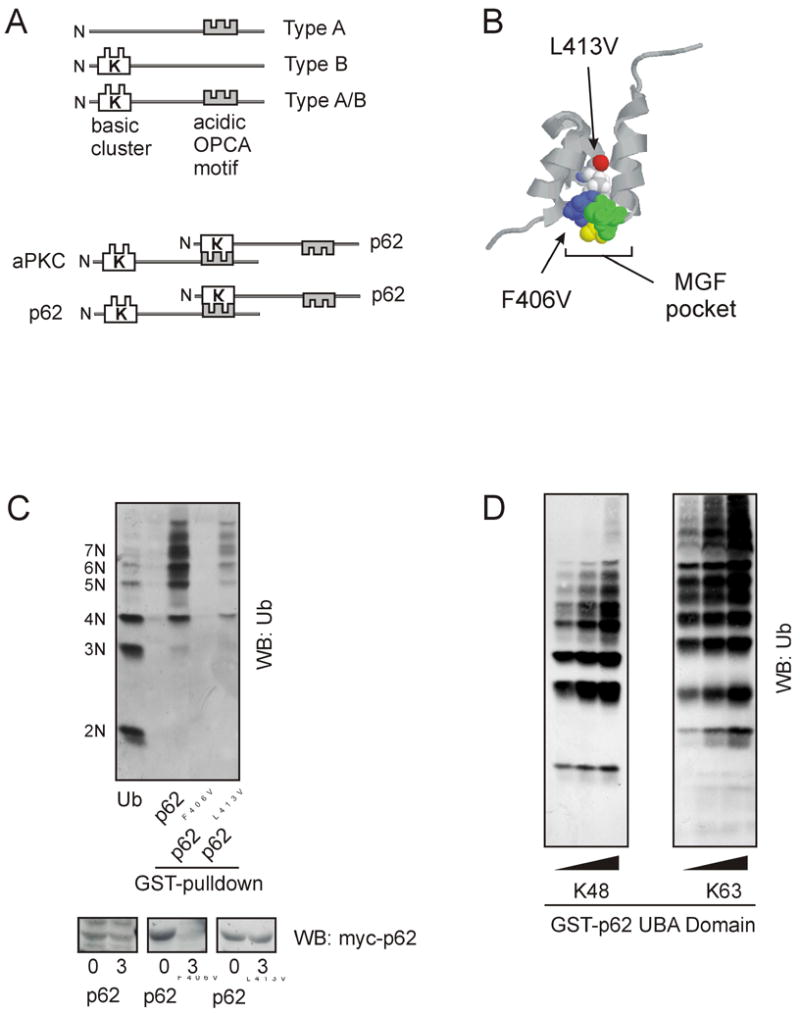Fig. 1.

Functional properties of p62 UbL and UBA domains. a) PB1 domains can be one of three types: Type A, Type B, or Type A/B. p62 interacts with aPKC and can also dimerize with another p62 molecule via back-to-back binding of the basic cluster and the OPCA motif within the PB1 domain. b) The “MGF” binding pocket of p62’s UBA domain accommodates polyubiquitin binding. Location of p62 UBA mutations, F406V and L413V. c) UBA domain mutants were tested for their ability to bind polyubiquitin chains in a GST-UBA pulldown and Western blotting for ubiquitin (Ub), upper panel. p62 turnover was assessed by transiently transfecting HEK cells with myc-tagged p62 UBA domain mutants. Following overnight incubation, cells were treated with cyclohexamide for 24 hours. Lysates were prepared immediately after treatment 0, or after 3 hours the expression of p62 was monitored by Western blotting for myc. d) The UBA domain of p62 bind both K48 and K63 polyubiquitin chains [19]. GST-tagged p62 UBA domain was used in a pulldown assay along with increasing concentrations of either K48 or K63 polyubiquitin chains (kindly provided by Cecile Pickart).
